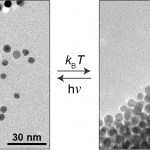microbiome
Photo by Donnie Ray Jones from Flickr creative commons.
A recent study published in Microbiome from researchers at the University of Alberta shows that babies from families with pets had nearly two-fold increases in the amount of two specific microbes in their guts, Ruminococcus and Oscillospira. These particular microbes are associated with reduced risks of developing childhood allergies as well as obesity. According to study author Dr. Anita Kozyrskyj, “There’s definitely a critical window of time when gut immunity and microbes co-develop, and when disruptions to the process…
The opening session was great!
By Tatsuo Yamashita (Flickr: ワンセグで紅白をみます 2012/12/31) [CC BY 2.0 (http://creativecommons.org/licenses/by/2.0)], via Wikimedia Commons
Eric Hoffman (Children's National Medical Center) presented work on chronic inflammatory diseases in children. He mentioned that while diets high in fats and carbohydrates (i.e. Western diets), obesity and sedentary lifestyles are associated with inflammation and related diseases (ex: asthma, type 2 diabetes), another contributor could be hormones. Kids who stay indoors more often have reduced exposure to …
I am very excited about the upcoming 3rd annual Michigan Physiological Society Meeting on May 12-13 in Detroit. This society is a local chapter of the American Physiological Society. I am most excited by their choice of a Comparative Physiologist for the keynote address: Dr. Hannah V. Carey from the University of Wisconsin School of Veterinary Medicine. Dr. Carey is a Past-President of the American Physiological Society. She will be presenting her research on how the gut microbiome of hibernators changes seasonally as well as the symbiotic relationship between the gut microbes and the…
By Hollingsworth John and Karen, U.S. Fish and Wildlife Service [Public domain], via Wikimedia Commons
Researchers are spending a lot of time exploring how the microbes living in our guts impact our health. In a new study published in Cell Reports, researchers wanted to know how the gut microbes of wild brown bears changes between summer and hibernation. They discovered that during the summer, the microbial species present in the gut are more diverse and are of the type that helps store energy. In fact, when the research team gave the microbes to rodents, the rodents gained…
Whenever I point out that a very common thread of "thought"—if you can call it "thought"—in alternative medicine is nothing more than germ theory denialism, the usual reaction is incredulity. Newbies who haven't encountered quacks before invariably do a double take when I inform them that germ theory denialism is a thing, particularly among antivaccine activists. (After all, vaccines don't make sense if microorganisms don't cause disease.) Yet, time and time again I find examples of quacks who deny that disease is a consequence of infection. In fact, some go so far as to try to argue in the…
One day in the future, we may be treating our ailments with microbiotic combinations designed specifically to correct imbalances in our personal microbiomes. We’ll bring our prescriptions on rewritable paper and pay using shimmery optical chips embedded in our cell phone cases or maybe our jewelry. Or we’ll be waiting in our doctor’s office for a simple test of our microbiogenome to see if a light-based nanoparticle delivery treatment is working, while watching iridescent optical displays that change as we move...
These future scenarios (and many more) are all imaginary, but…
Day 4 of the meeting turned out to be pretty exciting for a comparative physiologist as well.
The first session that I went to was called "RNASEQ approaches to understanding extreme physiological adaptations." Considering the Comparative and Evolutionary Physiology section business and dinner meeting was the night before, I was impressed at my ability to make it to an 8:00am session the following morning.
The first seminar from Dr. Brooke C Harrison (Univ. Colorado, Boulder) was on "Extreme cardiac growth and metabolism in the Burmese python after feeding." He spoke about how the cells…
[This is my latest review for Download the Universe]
Honor Thy Symbionts, by Jeff Leach. Kindle
In 2003, the Human Genome Project--an effort to sequence every gene in a human being--was completed. The success, announced to great fanfare, was supposed to herald a new era in health care. Unfortunately, the promises of personalized medicine, in which treatments are tied to a person's genetic sequence, have not yet come to fruition. A few of the reasons for this are obvious (at least in hindsight). Knowing the location and sequence of a gene is one thing, knowing what it does is quite…
When worked on the human microbiome, I regularly confronted a problem with the data. Species frequencies are almost never normally distributed ('the bell curve'), and if you want to use standard statistical techniques the data should be normally distributed. The second problem is that the data often have a lot of zero values. That is, if I look a bunch of gut samples from people (actually the data--the samples are VERY STINKY!), in many samples, a bacterial species* will be quite frequent (2-20%), but in other samples, it will be very rare (0.01%) or completely absent (i.e., 0%).
Often,…
...someone makes an animated cartoon about it. Charlie Foster sends us this clever little animation about the human gut microbiome, narrated by 'Barry fragilis' (Barry is, of course, short for Bacteroides). Anyway, enjoy:
Nick Loman listed the fifty most sequenced bacterial genomes according to NCBI. A reader at Nick's blog came up with an improved list--one that reflects the genomes for which we actually have data (depending on who is doing the sequencing, a project will be registered with NCBI, often months before any sequencing is done). Here's the 'improved' top twenty:
173 Escherichia coli
82 Salmonella enterica
78 Staphylococcus aureus
69 Propionibacterium acnes
56 Streptococcus pneumoniae
56 Enterococcus faecalis
45 Bacillus cereus
42 Mycobacterium tuberculosis
36 Vibrio cholerae
29 Pseudomonas…
One of the issues I've discussed repeatedly is how resources--money--need to be shifted from data generation to data processing and analysis. This report about the Earth Microbiome Project, which will characterize 10,000 environmental (e.g., soil, water) samples is encouraging. Someone must have learned something from the last few years of microbiome work:
The sequencing aspect of the project is estimated to only account for about 10 percent of the total cost, with analysis and computation making up the bulk of the expense, said Meyer.
More like this please.
Whenever a new discipline, especially one using a 'sexy' technology, is brought to bear on human disease, it seems to be oversold in what it will actually accomplish. In addition, every problem is suddenly viewed through that lens, that if we understand how phenomenon X influences something, then WE CAN HAZ CUREZ. I'm worried that this is happening to the human microbiome, the study of the microbes that live in and on us (Note: I'm going to call this area of study 'the human microbiome' since a term like metagenomics doesn't include classical microbiological techniques; calling it the…
I don't see the need to redescribe the recent paper about the discovery of bacteria that can might replace, in extremis, phosphorus with arsenic, which was overhyped by NASA, was poorly covered by most journalists, and which has compromising methodological problems (for good coverage, read here, here, and here; and snark). But what the paper does demonstrate is the importance of culturing microorganisms, knowledge about which is becoming rapidly lost by younger scientists.
With the advent of DNA-based, culture-independent techniques, where we can look at the DNA and RNA of microbes without…
Shamelessly stolen from Dr. Isis
Yes, you read the title correctly. As I've mentioned before, I'm involved with the Human Microbiome Project, which examines how the microbes that live on and in us affect human health and disease. One of the things we do is look at human gut communities. In most cases, examining the bacteria growing on the side of gastrointestinal tract is...difficult. Think the Mother of All Protological Exams. So we use feces as a proxy of what lives in your gut. And since you were going just flush that stuff anyway, mind if we....
Well, you get the idea. Now you…
A couple of weeks ago I attended the Human Microbiome Research Conference. At that meeting, one talk by Bruce Birren (and covered by Jonathan Eisen) mentioned something that was completely overlooked by the attendees. Now, I don't blame them, since what Birren mentioned was about bacterial genomics, not the human microbiome. But here's what I tweeted about Birren's talk (TWEET!):
B. Birren-E. coli K-12 can be assembled into 1 scaffold for hundreds of $s with Illumina seq & new jumps
Let's unpack this below the fold.
When we sequence a genome, we actually sequence small pieces (with the…
One of the common sayings in microbiology that drives me up a wall is the notion that 99% of all bacteria can't be grown in the lab. This false statement stems from the observation that if you take any sample (soil, water, clinical samples) and look under a microscope we see many more bacterial cells that contain DNA than we can grow. The problem is that, if you look at the paper that claimed this, they attempted to grow bacteria on a single, rich medium.
One weekend, when I was a post-doc, I did a very simple comparison. I took standard rich lab medium ('nutrient agar' which is basically…
I'll be at the Human Microbiome Research Conference for a few days. But don't worry, this blog will keep on rollin'.
Check out Carnal Carnival #1: Essentials of Elimination, hosted by Bora at A Blog Around the Clock. It's a fascinating collection of blog posts all about poop. (The post I put up yesterday on sanitation is among them.) Many of the posts are about the interesting things scientists can learn by studying excrement - human or animal, fresh or fossilized.
A couple of the posts deal with a topic that seems to be attracting more and more attention: gut flora, or the microbiome. Basically, our digestive systems are colonized by a range of microbes, some of which assist us with digestion and vitamin…
Reporting on the human microbiome--the microorganisms that live on and in us--is quite the rage these days. As someone who is involved in NIH's Human Microbiome Project, it's a pretty exciting time because the size and scale of the data we're able to generate is unprecedented.
This also means we have to figure out how to not only generate, but also analyze these data. One of the kinds of data we generate are 16S rRNA sequences, which are found in all bacteria and can be used as a 'barcode' to identify and quantify the bacteria in a community without having to culture each species. A…



